Inverter peripherals and options - Solutions - Huaqiang Electronic Network
First, the main electrical components must be selected as shown in the diagram.
Q – Circuit breaker;
KM – Contactor;
FU – Fast fuse;
UF – Frequency converter;
M – Motor
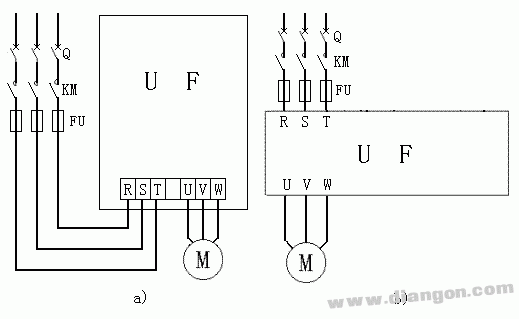
1. Circuit Breaker
The primary function is illustrated in the following figure:
It is used to open and close the power circuit and automatically disconnect the power when an overcurrent or short circuit occurs. It provides isolation protection for the system.
Selection Principle: I_QN ≥ (1.3 ~ 1.4) * I_N
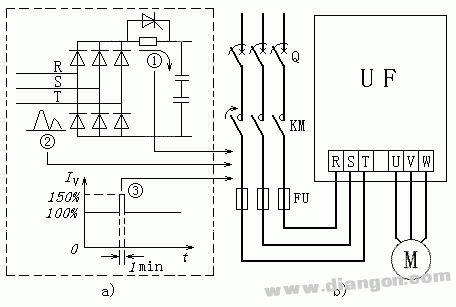
2. Input Contactor
Main functions:
- Enables control of the inverter’s power-on and power-off via a push-button switch;
- Automatically cuts off power when the inverter or brake unit fails.
Selection Principle: I_KN ≥ I_N
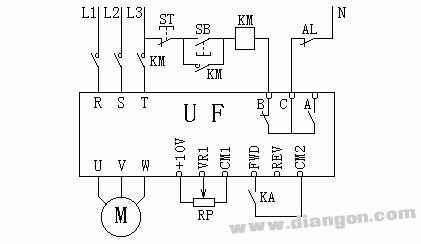
3. Output Contactor
Function:
- Switches motor power between the grid and the inverter;
- Ensures the inverter output is not connected to the grid.
Selection: I_KN ≥ 1.1 * I_MN
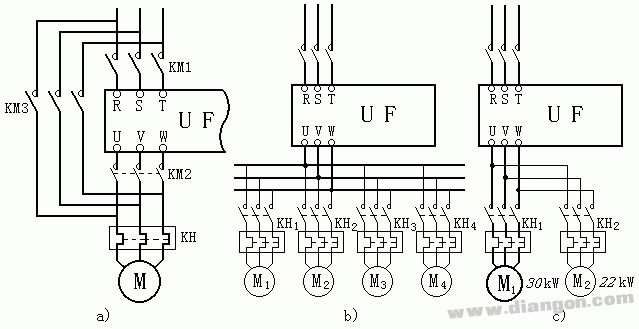
Second, selection of the main circuit wire size
1. Wire between power supply and inverter
Same method as selecting wires for standard motors of similar capacity.
Requirement: ΔU ≤ (2 ~ 3)% * U_N
2. Wire between inverter and motor
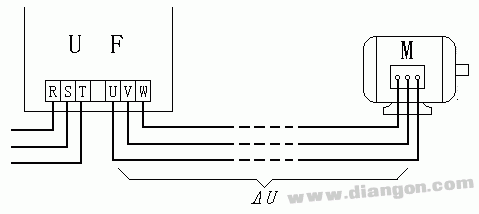
3. Inverter Power Factor
Definition: PF = P/S = DF * Kd
Where:
PF – Power factor;
P – Active power, kW;
S – Apparent power, kVA;
DF – Displacement factor (cosφ);
Kd – Distortion factor, the ratio of fundamental current RMS to total RMS.
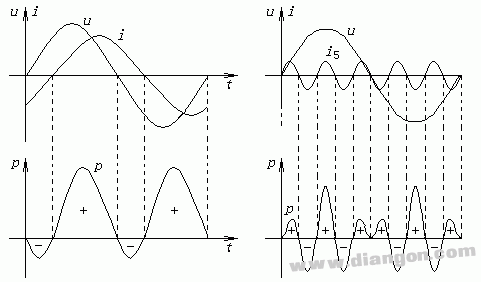
Power factor improvement:
To improve the power factor or when the installation is near a large power source, a DC or AC reactor must be added. This also helps:
– Suppress input inrush current;
– Reduce voltage imbalance impact;
– Improve power factor to 0.75~0.85;
– Increase power factor by about 0.9.
Reactor selection is shown below:
– Reactor voltage drop should not exceed 3% of rated voltage;
– If transformer capacity > 500kVA or more than 10 times the inverter capacity, a distributor should be used.
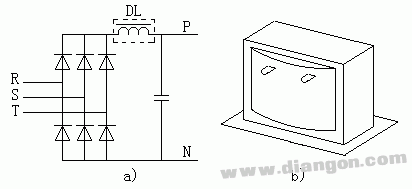
AC Reactor
AC-DC Reactor
4. Inverter Anti-Interference
Voltage and current waveforms are shown below:
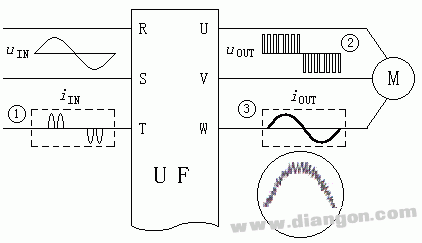
1. External interference from the power line can cause distortion and damage the inverter's switch tubes. An AC reactor on the input line can suppress this interference effectively.
2. Inverter interference to the outside world:
Propagation modes include:
Circuit coupling: Main mode for inverter input interference through the power network.
Inductive coupling:
- Electromagnetic induction: Main propagation mode for current interference.
- Static induction: Main propagation mode for voltage interference.

Anti-interference measures:
On the inverter side:
- Use proper wiring and shielding to reduce inductive interference;
- Add small inductors to weaken line-transmitted signals;
- Use absorption methods like filters to reduce radiated signals;
- Connect a filter reactor between the inverter and motor to reduce harmonics and improve motor performance;
- Do not use capacitors on the inverter output to absorb harmonics.
On the instrumentation side:
- Use isolation transformers or optocouplers to separate signals.
5. Braking Resistor Should Not Be Used
1. Factors affecting pump rise voltage during braking:
- Flywheel torque GD²;
- Deceleration time tB.
2. Braking resistor selection:
Energy consumption circuit characteristics are shown in the figure.
Braking resistance value: R_B = U_D / I_B (I_B = I_MN → T_B ≈ T_MN)
Braking resistor power: P_B0 = U_D² / R_B
Braking resistor capacity: P_B = α_B * P_B0
α_B is the correction factor, typically 0.3 ~ 0.5. Take smaller values for small motors and larger for big ones.
3. Composition and design of the brake unit:
Function and composition are shown in the figure.
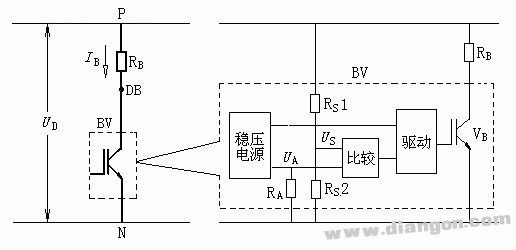
Main points of replacing the power tube with an AC contactor are shown in the figure.

Circular Saw Blade Polishing Machine
Circular Saw Blade Polishing Machine,Automatic Saw Blade Polishing Machine,Efficient Saw Blade Polishing Equipment,Polishing Machine For Saw Blade
Suzhou Mountain Industrial Control Equipment Co., Ltd , https://www.szmountain.com